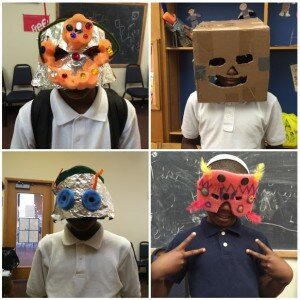I can’t say I ever really enjoyed school as a kid. Maybe I was subconsciously rebelling against my academic parents or just hated being forced to sit in a classroom on sunny days, but for whatever reason, formal education just wasn’t my bag. It wasn’t until I took a photography class in 10th grade that I started actually looking forward to going to school. My photography homework became an adventure- a hunt for light, shadow, and reflections that captured my imagination. In the darkroom I was a mad scientist, experimenting with chemistry and exposure times to bring my ideas to life. Our teacher gave us loose guidelines for these assignments, but for the most part, I was on my own to figure out what I wanted to photograph and how I wanted to print it. I was given the materials and guidance, but most importantly, the space to investigate what interested me.
The self-directed learning philosophy of Maker Jawn is something that I strongly identify with. I know from personal experience that not all children thrive in an academic setting. By providing informal mentor-based programming, Maker Jawn allows students to learn by pursuing their own interests in an exploratory and open environment. The materials and instruction are there when they need it, but for the most part, the students are left to themselves.
On a recent afternoon, one of my mentees at the Cecil B Moore branch came in and declared that he wanted to make a mask. Within a week, mask-making fever had gripped the kids at Cecil B Moore. Fabric masks, cardboard masks, LED masks, aluminum foil masks, and over-sized “mascot” style masks were all in production. Kids started making costumes to match their masks and alter egos were being formed. One mask inspired a character named Rhino Man. A cardboard circle on the left cheek of the mask represented The Dimple of Truth, another, The Dimple of Justice.

At our branch, I’m particularly interested in ways to combine these personal self-directed projects into a larger collaborative piece. Now that we have masks, costumes, and characters, it seems likely that a movie is not far off. This means that I’ll start bringing in video editing software and a camera to see which students gravitate towards the equipment. Maybe we’ll do activities that involve story-making and writing to see who wants to tackle a script, and find our next leading man or woman through movement exercises. The flexibility of our program allows me to respond to the interests of the kids and change course as we go. So instead of setting out with a specific goal in mind, we start from one student’s love of masks and end with a superhero action-adventure film.
The transition into collaboration will certainly not be without obstacles, however. For one thing, the drop-in nature of the program makes for irregular attendance, slowing the progress of long-term projects. Another issue is that the same open-ended and informal structure that allows for exploration and inquiry, can also lead to behavioral problems. Younger kids especially do not always know how to handle this new-found freedom. We try to encourage a playful energy to spark creativity, but when the playful energy becomes unfocused, all creativity stops.
I’m very excited at the prospect of “formalizing” informal education, and keenly interested in creating education / mentoring practices that allow kids to explore their own interests and “learn how to learn”. As a Maker Mentor, I’m afforded the flexibility to be creative and put these techniques into practice on my own, just as the mentees are allowed to experiment and play in their particular fields of interest. I’m happy to be bringing this culture to children who, like me, want to figure it out for themselves.
